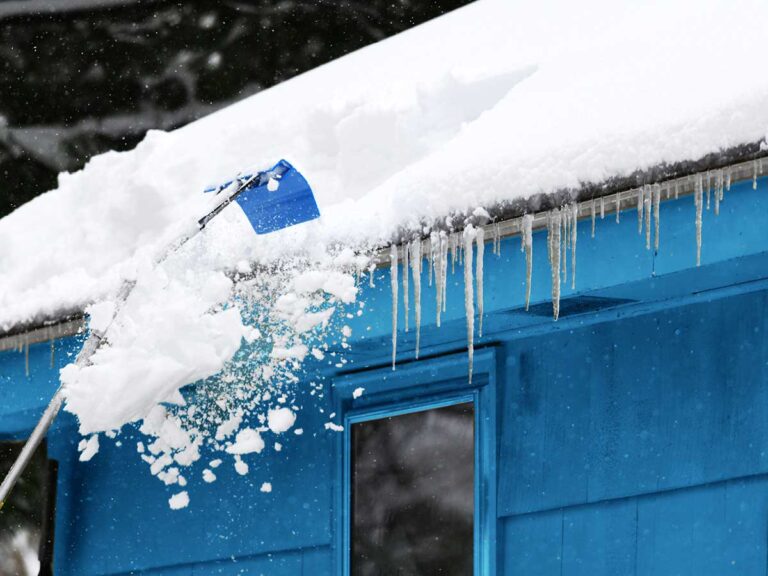How to Protect Your Property from Ice and Salt Damage

- Seal cracks and clear gutters to prevent ice damage and ensure proper drainage during winter.
- Use de-icing salts sparingly and opt for eco-friendly products to minimize surface and landscaping harm.
- Regular snow removal from walkways and roofs reduces ice formation and potential hazards.
- Salt residue can corrode surfaces; salt removal power washing effectively eliminates buildup and preserves materials.
- Proactive maintenance, including sealing and power washing, prevents long-term damage to your property.
Winter weather can take a serious toll on both residential and commercial properties. From the weight of ice to the corrosive effects of salt, seasonal elements can cause significant damage if left unchecked. Protecting your property from ice damage prevention requires strategic planning and regular maintenance. Additionally, addressing the residue from de-icing salts through salt removal power washing is essential for preserving surfaces and preventing long-term deterioration. Pristine, Inc. offers expert solutions to keep your property safe, clean, and pristine all winter long.
Why Ice and Salt Are Problematic
The Dangers of Ice Damage
Ice forms when water seeps into cracks or crevices in surfaces and freezes. As the water freezes, it expands, causing cracks to widen and materials to weaken. Over time, this can lead to structural damage, including:
- Cracks in Concrete and Asphalt: Frozen water can create fissures in sidewalks,
driveways, and parking lots. - Damage to Roofs and Gutters: Ice dams form when melting snow refreezes at roof edges, preventing proper drainage and causing water to seep into the structure.
- Hazards on Walkways: Slippery, untreated ice increases the risk of slips and falls for residents, employees, and visitors.
The Impact of Salt Residue
De-icing salts are often used to melt ice and improve safety. However, they can leave behind corrosive residue that:
- Erodes Concrete and Metal: Salt accelerates the deterioration of concrete, brick, and metal surfaces.
- Harms Landscaping: Salt runoff can damage plants, grass, and soil quality.
- Creates Unsightly Stains: White, chalky salt stains can mar the appearance of driveways, walkways, and building exteriors.
Tips for Winter Property Protection
Protecting your property from winter weather requires a combination of proactive measures and professional maintenance. Key strategies include:
- Seal Cracks and Crevices: Inspect sidewalks, driveways, and building exteriors for cracks and seal them before winter arrives. This prevents water from seeping in and freezing, reducing the risk of expansion damage.
- Ensure Proper Drainage: Clear gutters and downspouts of debris to channel melting snow and rain away from your property, preventing pooling and freezing.
- Use Ice Melt Sparingly: While effective, de-icing salts should be used sparingly and only in critical areas. Choose eco-friendly products that are less harmful to surfaces and landscaping.
- Insulate Pipes and Roofs: Prevent frozen pipes and ice dams by insulating vulnerable areas and encouraging proper drainage of melting snow.
- Prompt Snow Removal: Regularly clear snow from driveways, walkways, and roofs to minimize the formation of ice. Focus on shaded areas and low spots prone to pooling water.
- Schedule Salt Removal Power Washing: Professional power washing eliminates corrosive salt buildup, restores surfaces, and prevents long-term damage. This service is crucial for maintaining the integrity and appearance of your property during and after winter.
Why Salt Removal Power Washing Matters
While de-icing salts are essential for safety, their residue can wreak havoc on your property if not addressed. Salt removal power washing effectively eliminates salt buildup, protecting and preserving surfaces. This process prevents corrosion, ensuring that concrete, metal, and brick remain strong and intact. It also restores surfaces to their original appearance by removing unsightly salt stains, leaving them clean and polished. Additionally, regular salt removal helps prevent long-term damage while using eco-friendly products that protect surrounding landscaping and soil.
How Pristine, Inc. Helps with Ice and Salt Management
Pristine, Inc. provides expert solutions to protect your property from the damaging effects of ice and salt. Our comprehensive services include:
- Salt Removal Power Washing: Using state-of-the-art equipment, we remove salt residue from sidewalks, driveways, parking lots, building exteriors, patios, and decks. This service ensures that your property remains clean, safe, and free from corrosive buildup.
- Preventative Maintenance Programs: We offer customized maintenance plans to help property owners stay ahead of winter damage. Our programs include routine inspections, crack sealing, and scheduled power washing to address salt and debris throughout the season.
- Emergency Response Services: Winter weather can be unpredictable. Pristine, Inc. is prepared to respond quickly to unexpected ice or water damage, providing fast and reliable support when you need it most.
Protect Your Property This Winter
Winter doesn’t have to mean costly repairs and unsightly damage. With proactive ice damage prevention and effective salt removal power washing, you can maintain the safety and appearance of your property all season long. Pristine, Inc. offers the expertise, tools, and eco-friendly solutions you need to keep your property pristine, no matter the weather.
Contact Pristine, Inc. today to learn more about our winter maintenance services and schedule a consultation. Let us help you protect your property from ice and salt damage this season!
